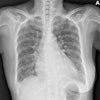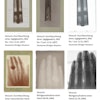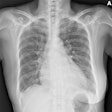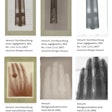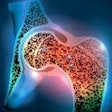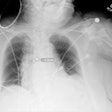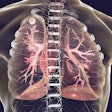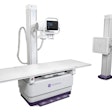 Ilze Apine, MD, PhD, of the Children’s University Hospital in Riga, Latvia, discussed imaging considerations in pregnant patients at ECR 2024.
Ilze Apine, MD, PhD, of the Children’s University Hospital in Riga, Latvia, discussed imaging considerations in pregnant patients at ECR 2024.
Clinicians and staff should take a personalized approach with patients when communicating the benefits and risks of medical radiation from interventional procedures, especially with pregnant women, according to experts.
At ECR 2024 in Vienna, a panel of leaders in the field discussed strategies for interventionalists and radiographers in this special population.
“Use simple language. Be aware of who is sitting in front of you,” encouraged Carolina Rio Bartulos, PhD, of the Hospital Braunschweig in Germany, during the March 1 session.
The effects of radiation exposure on patients are divided into two categories, Bartulos explained. Deterministic effects refer to tissue damage and cell death that may occur from short-term exposure, with the severity of damage depending on the dose. If the dose exceeds recommended thresholds, damage may be certain, she said.
On the other hand, stochastic radiation exposure refers to cell defects and DNA damage that may occur due to exposure, and these effects over time have been associated with cancer. However, dose thresholds for stochastic effects have not ultimately been defined, she noted.
“It's important to have this in mind because radiation exposure is cumulative regardless of the time intervals between the examinations,” Bartulos said.
Special attention in pregnant patients
Learning how to communicate the risks of radiation exposure to pregnant patients and fetuses takes special consideration and familiarity with certain ethical considerations, noted Dr. Ilze Apine, PhD, of the Children’s University Hospital in Riga, Latvia, during the session.
Pregnant women can be emotional and fear detrimental effects, with mass media stoking these fears, she said. Moreover, staff members themselves can be reluctant or dismissive due to a lack of knowledge or misconceptions regarding radiation protection.
“But pregnant women should never be denied an indicated procedure due to pregnancy and pregnancy alone should never be a contraindication to radiation exposure,” Apine said.
Dose thresholds
The key is to first understand dose thresholds for noncancerous tissue radiation effects over which radiation damage may occur. In early embryonic development before implantation in the uterine wall, this threshold is 150 milligray (mGy); during two to seven weeks post conception, the threshold is 250 mGy; and in the late organogenesis stage (8-15 weeks post conception), the “most sensitive period,” Apine noted, the threshold is 100 mGy.
“Nevertheless, such high dose [250 mGy] can be accumulated in 10 to 15 CT scans, which for a pregnant patient is not a realistic situation,” she said.
When imaging the fetus, a single plain radiograph does not contribute to a significant radiation dose because it varies from 0.001 mGy to 10 mGy, depending on the type of the study, Apine said. The highest radiation dose here occurs with lumbar spine imaging, she added.
CT scans, on the other hand, contribute to a significant amount of fetal radiation, with pelvis exams contributing the highest at 50 mGy, she said.
“This is about right at the limit above which there is a documented negative impact to the fetus,” Apine noted.
Ethical considerations
The core ethical values related to exposing pregnant women and fetuses to ionizing radiation focus on the concepts of beneficence and nonmaleficence, or in other words, “doing good and avoiding harm,” Apine said.
In addition, prudence is required, which is defined as the ability to make informed and carefully considered decisions knowing that there are gaps in our knowledge and the scope of consequences. Compounding uncertainty is the fact that radiosensitivity varies among individuals, she added.
“Naturally we cannot be completely sure that those levels below 50 mGy are absolutely safe,” Apine said.
Patient-centered conversations
Communications with patients on the risks and benefits should thus start with prioritizing the patient’s well-being and the safety of the developing fetus, while also considering what the patient wants. Questions such as “Is the exam necessary?" and “What are the theoretical risks?” should be discussed openly using plain language, Apine said.
Obtaining informed consent offers patients dignity, with patients having the right to accept the risk voluntarily and an equal right to refuse, she said. These conversations require tact and empathy, moreover. Apine added that providing too much information can increase a patient’s fear, while including too little can increase anxiety.
Ultimately, the communication must be patient-centered, Apine said.
“Be honest, and say, 'By now, we don’t know everything, but there is evidence that…’ and explain,” she suggested.


